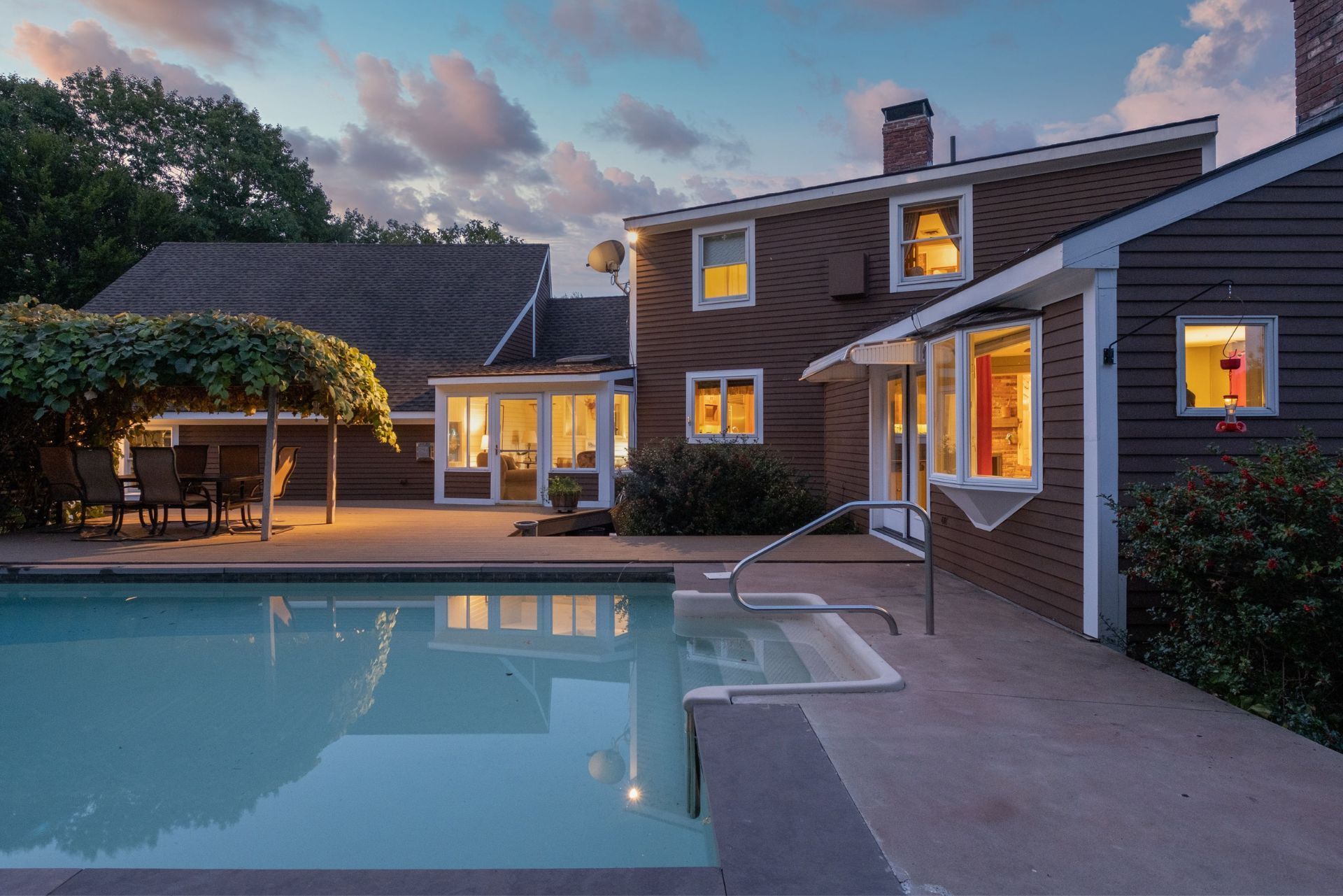Minnesota High-Value Home Insurance

See How We're Different
or call us: (763) 242-1668
Common Personal Insurance Policies
By: Matt Larsen
Owner of Capstone Insurance Group & Umbrella Insurance Advisor
763-242-1668
Index
Contact Us
Minnesota is known for its stunning landscapes, vibrant communities, and a strong sense of local pride. For homeowners in this state, ensuring that their properties are adequately protected is of utmost importance, especially for those who own high-value homes.
High-value home insurance is designed specifically for properties that exceed the average market value, providing tailored coverage that meets the unique needs of these homeowners. This article will delve into the essentials of high-value home insurance in Minnesota, covering everything from coverage options to the claims process.
Understanding High-Value Home Insurance
High-value home insurance is a specialized form of homeowners insurance that caters to properties with a higher market value, typically above $750,000. Standard homeowners insurance may not provide adequate coverage for these homes, as it often has limitations on certain types of property and may not cover the full replacement cost in the event of a loss.
This type of insurance is designed to protect not just the physical structure of the home, but also the valuable belongings within it, including art, jewelry, and luxury furnishings. Additionally, high-value home insurance often includes enhanced liability coverage, which is crucial for homeowners who may face higher risks due to the nature of their properties. For instance, if a guest is injured on the premises, the liability coverage can help mitigate the financial repercussions of potential lawsuits, which can be particularly daunting for owners of high-value homes.
Key Features of High-Value Home Insurance
One of the most significant advantages of high-value home insurance is the comprehensive coverage it offers. This includes not only the dwelling itself but also additional structures on the property, personal property, and liability protection. Furthermore, many policies provide replacement cost coverage, ensuring that homeowners can rebuild their homes to their original state without facing financial shortfalls. This is especially important for high-value homes, where the materials and craftsmanship involved in construction can be costly to replicate.
Another feature that sets high-value home insurance apart is the ability to customize coverage options. Homeowners can often add endorsements for specific items or risks, such as flood insurance or coverage for high-value collectibles. This level of customization is vital for homeowners who want to ensure that all aspects of their property are adequately protected. For example, a homeowner with an extensive art collection may choose to add specific coverage for each piece, ensuring that they receive the full value in the event of theft or damage. Such tailored policies can make a significant difference in the overall protection strategy for high-value properties.
Why High-Value Homes Need Specialized Insurance
High-value homes often come with unique features and risks that standard homeowners insurance may not cover. For instance, these homes may have extensive landscaping, custom-built structures, or high-end materials that require specialized coverage. Additionally, high-value properties may be located in areas prone to natural disasters, increasing the need for comprehensive protection. The geographical location can play a critical role in determining the types of risks that homeowners face, from flood zones to wildfire-prone areas, making it essential to have a policy that addresses these specific challenges.
Moreover, the financial implications of a loss can be significant. In the event of a disaster, the cost to rebuild or repair a high-value home can far exceed the limits of a standard policy. High-value home insurance ensures that homeowners are not left underinsured, providing peace of mind in an uncertain world. Furthermore, many high-value home insurance policies also include additional services, such as risk assessments and home inventory assistance, which can help homeowners better understand their coverage needs and ensure that they are fully prepared for any eventuality. These proactive measures can be invaluable in safeguarding not just the property but also the lifestyle that comes with owning a high-value home.

When it comes to high-value home insurance, understanding the various coverage options available is crucial. Homeowners can choose from a range of policies that cater to their specific needs, ensuring they receive the best protection for their investment.
Dwelling Coverage
This is the core component of any homeowners insurance policy, covering the physical structure of the home. For high-value properties, dwelling coverage typically includes replacement cost coverage, which means that in the event of a total loss, the homeowner can rebuild their home without facing depreciation deductions.
Additionally, many policies offer extended replacement cost coverage, which provides extra protection in case rebuilding costs exceed the policy limit. This is particularly important in areas where construction costs can fluctuate significantly. Homeowners should also consider the unique architectural features of their high-value homes, as some policies may allow for specialized coverage that accommodates unique materials or craftsmanship that would be difficult to replicate in a standard rebuild.
Personal Property Coverage
High-value homes often contain valuable personal belongings, and standard policies may not provide sufficient coverage for these items. High-value home insurance typically includes higher limits for personal property coverage, ensuring that homeowners can replace their belongings in the event of theft, fire, or other covered losses.
Furthermore, homeowners can often schedule specific high-value items, such as fine art or jewelry, for additional protection. This means that these items are covered for their full value, regardless of the overall limits of the policy. It is advisable for homeowners to conduct a thorough inventory of their possessions, including photographs and appraisals, to ensure that all valuable items are adequately documented and insured, providing an added layer of security in case of loss.
Liability Coverage
Liability coverage is a critical component of high-value home insurance, as it protects homeowners against legal claims resulting from injuries or damages that occur on their property. High-value homes may attract more visitors and, consequently, a higher risk of accidents.
Many high-value home insurance policies offer higher liability limits than standard policies, which is essential for protecting homeowners from potentially costly lawsuits. This added layer of protection can provide peace of mind, knowing that financial repercussions from unforeseen incidents are mitigated. Additionally, homeowners may want to consider an umbrella policy, which provides extra liability coverage beyond the limits of their home insurance, offering further security against substantial claims that could threaten their financial stability.
Factors Affecting High-Value Home Insurance Premiums
Understanding the factors that influence insurance premiums is vital for homeowners looking to secure high-value home insurance. Several elements come into play when determining the cost of coverage, and being aware of these can help homeowners make informed decisions.
Location
The geographical location of a home significantly impacts insurance premiums. Homes situated in areas prone to natural disasters, such as floods, hurricanes, or wildfires, may face higher premiums due to the increased risk of claims. Additionally, homes in urban areas may have different rates compared to those in rural settings, often reflecting the local market conditions and crime rates.
Furthermore, proximity to fire stations, emergency services, and community resources can also affect premiums. Homes located near these services may qualify for discounts, as they are considered lower risk.
Home Features
The specific features of a high-value home can also influence insurance costs. Homes with high-end materials, custom designs, or extensive landscaping may require higher coverage limits, leading to increased premiums. Additionally, homes equipped with advanced security systems or fire prevention measures may qualify for discounts, as these features reduce the risk of loss.
Moreover, the age and condition of the home play a role in determining premiums. Older homes may require more maintenance and repairs, which can increase the likelihood of claims, while newer homes may benefit from modern construction standards and materials, potentially lowering premiums.
Claims History
A homeowner's claims history can significantly impact their insurance premiums. If a homeowner has a history of frequent claims, insurers may view them as a higher risk, leading to increased premiums. On the other hand, homeowners with a clean claims history may qualify for lower rates, as they are considered more responsible and less likely to file future claims.
Additionally, the claims history of the property itself can affect premiums. If the home has a history of significant claims, such as water damage or fire, insurers may charge higher premiums to account for the perceived risk.

How to Choose the Right High-Value Home Insurance Policy
Choosing the right high-value home insurance policy requires careful consideration of various factors. Homeowners should take the time to assess their needs and compare different policies to find the best fit for their unique circumstances.
Assess Your Coverage Needs
Before selecting a policy, homeowners should conduct a thorough assessment of their coverage needs. This includes evaluating the value of the home, personal belongings, and any unique features that may require additional coverage. Understanding these needs will help homeowners determine the appropriate coverage limits and policy options.
Additionally, homeowners should consider any potential risks associated with their property, such as natural disasters or high liability exposure, and ensure that their chosen policy adequately addresses these concerns.
Compare Insurance Providers
Not all insurance providers offer the same coverage options or premiums, so it's essential to shop around and compare different insurers. Homeowners should research various companies, looking for those with strong financial ratings, positive customer reviews, and a reputation for excellent claims handling.
Obtaining quotes from multiple providers can help homeowners understand the market rates and identify any significant differences in coverage options. This process can also reveal potential discounts or benefits that may be available with certain insurers.
Consult with an Insurance Agent
Working with an experienced insurance agent can be incredibly beneficial when navigating the complexities of high-value home insurance. An agent can provide valuable insights into the various coverage options available and help homeowners tailor a policy that meets their specific needs.
Additionally, an agent can assist with the claims process, ensuring that homeowners understand their rights and responsibilities in the event of a loss. This support can be invaluable, especially for those unfamiliar with the intricacies of insurance policies.
Common Exclusions in High-Value Home Insurance
While high-value home insurance provides extensive coverage, it's essential for homeowners to be aware of common exclusions that may apply to their policies. Understanding these limitations can help homeowners avoid surprises when filing a claim.
Natural Disasters
Many high-value home insurance policies exclude coverage for certain natural disasters, such as floods and earthquakes. Homeowners in areas prone to these events may need to purchase separate policies or endorsements to ensure they are adequately protected.
It's crucial for homeowners to assess their property's risk factors and consider additional coverage if necessary. For instance, flood insurance is often required for homes located in designated flood zones, while earthquake insurance may be advisable for properties in seismically active regions.
Wear and Tear
High-value home insurance typically does not cover damage resulting from normal wear and tear. Homeowners are responsible for maintaining their properties, and insurers will not pay for repairs related to aging systems or materials. This includes issues like roof leaks due to aging shingles or plumbing problems caused by outdated pipes.
Homeowners should regularly inspect and maintain their properties to prevent these types of issues. Keeping detailed records of maintenance and repairs can also be helpful when filing claims for sudden or unexpected damages.
Intentional Damage
Most high-value home insurance policies exclude coverage for intentional damage caused by the homeowner or any household members. This includes acts of vandalism or destruction of property. Homeowners should be aware that any claims related to intentional damage will likely be denied, and insurers may take legal action if they suspect fraud.
To protect against potential risks, homeowners should foster a safe and responsible environment within their homes, ensuring that all household members understand the importance of maintaining the property and respecting its value.
The Claims Process for High-Value Home Insurance
Understanding the claims process for high-value home insurance is essential for homeowners. In the event of a loss, knowing how to navigate the process can make a significant difference in ensuring a smooth and efficient resolution.
Reporting a Claim
When a loss occurs, the first step is to report the claim to the insurance provider as soon as possible. Most insurers have a dedicated claims hotline or online portal for homeowners to submit their claims. Providing accurate and detailed information about the incident is crucial, as it will help the insurer assess the claim more effectively.
Homeowners should document the damage with photographs and keep records of any related expenses. This documentation can be invaluable when negotiating with the insurer and ensuring that all losses are accounted for.
Claim Assessment
After a claim is reported, the insurance company will assign a claims adjuster to assess the damage. The adjuster will evaluate the property, review the documentation provided, and determine the extent of the loss. This process may involve interviews with the homeowner and any witnesses, as well as consultations with contractors or specialists.
Homeowners should be prepared to provide additional information or documentation as requested by the adjuster. Open communication during this process can help expedite the assessment and ensure that all relevant details are considered.
Receiving Payment
Once the claim has been assessed and approved, the insurer will issue payment to the homeowner. Depending on the policy, this payment may cover the full cost of repairs or replacement, minus any deductibles. Homeowners should review the settlement carefully to ensure that it aligns with the terms of their policy.
If there are any discrepancies or concerns regarding the settlement, homeowners have the right to appeal the decision or negotiate with the insurer. Consulting with an insurance agent or attorney can be helpful in these situations, providing guidance on how to proceed effectively.
Conclusion
High-value home insurance is an essential consideration for homeowners in Minnesota who own properties exceeding the average market value. With tailored coverage options, enhanced liability protection, and the ability to customize policies, high-value home insurance provides peace of mind and financial security.
By understanding the key features, coverage options, and claims process, homeowners can make informed decisions about their insurance needs. Whether assessing coverage requirements, comparing providers, or navigating the claims process, being proactive can help ensure that high-value homes are adequately protected against unforeseen events.
Ultimately, investing in high-value home insurance is not just about protecting a property; it’s about safeguarding a lifestyle and preserving the value of a cherished home for years to come.





